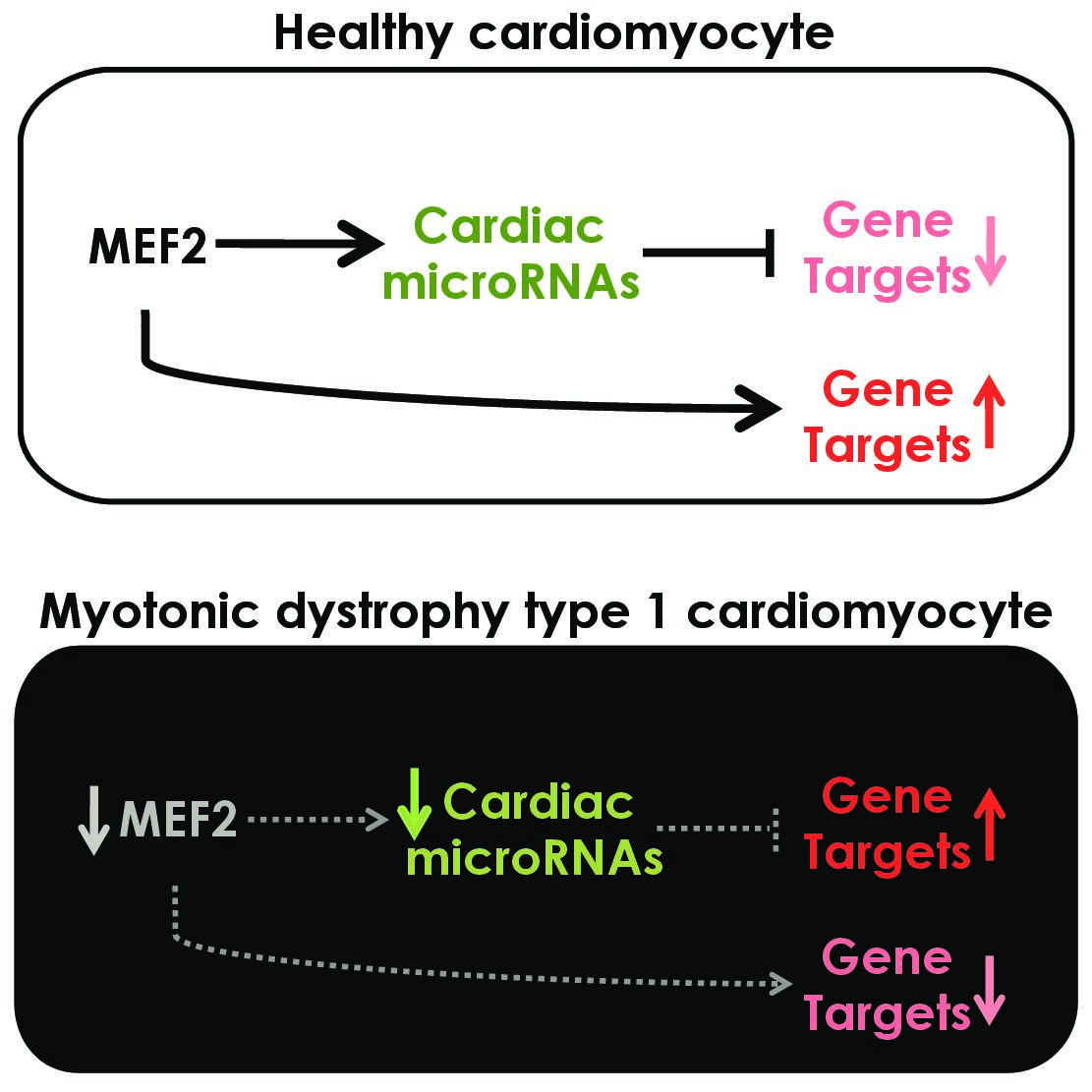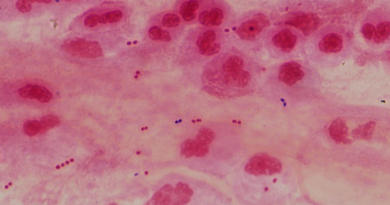Myotonic dystrophy disrupts normal control of gene expression in the heart

By Ruth SoRelle, M.P.H.
The second most common cause of death in patients with myotonic dystrophy type 1, an inherited form of muscular dystrophy with symptoms that begin in early adulthood, is arrhythmia, the inability of the heart to beat properly.
Why that occurs has been a concern of Dr. Thomas A. Cooper, professor of pathology & immunology at Baylor College of Medicine . Recently in a study in the journal Cell Reports , he and colleagues showed that these arrhythmias may stem by disruption of a transcription network controlled by MEF2 that affects activity of the minute bits of genetic material called microRNAs responsible for fine-tuning expression of proteins .
.
Many microRNAs affected
“Our studies in both mice and human heart tissues identified many microRNAs that are affected,” said Cooper. Myotonic dystrophy occurs because parts of the gene DMPK (dystrophia myotonica-protein kinase) are duplicated abnormally, resulting in what is known as a triplet repeat. While most myotonic dystrophy research has focused on problems related to types of messenger RNAs produced from genes by altered splicing, this study demonstrates additional problems with expression of microRNAs, said Dr. Auinash Kalsotra, assistant professor of biochemistry and the first author on the study, who has now started his own research group at the University of Illinois,

Professor of Pathology & Immunology
Baylor College of Medicine
Urbana-Champaign.
Cooper, Kalsotra and their colleagues screened approximately 500 microRNAs and found 54 affected. A screen of human myotonic dystrophy cells identified 20 that were downregulated in the heart tissue of patients with myotonic dystrophy. MicroRNAs maintain proper gene activity so abnormal microRNA levels is likely to produce disease.
Transcription factor levels low
By investigating why the microRNAs were abnormal, the investigators found that the protein controlling their expression, the transcription factor MEF2, was abnormally low in heart tissue of patients and animals with myotonic dystrophy heart tissue.
MicroRNAs are fairly recently recognized genetic actors that fine tune the levels of messenger RNA, which takes the genetic code to that part of the cell where proteins are made. In this case, MEF2 affects not only the level of activity of genes but also these bits of RNA that fine-tune the proteins associated with the genes.
“This shifted the focus of research. Now a transcription factor is involved,” Cooper said. Transcription factors control the expression of genes (the levels of activity). Since MEF2 controls many other genes in addition to those of microRNAs, the results identify additional abnormalities that can help explain some features of the disease.
The roles of aberrant microRNAs
For example, said Cooper, aberrant microRNAs result in turning on cellular factors that should not be turned on. The protein CELF1, which is upregulated in the disease, is affected by these microRNAs.
“The regulation of genes is very dynamic and finely tuned to respond to changing conditions,” he said. “The abnormality that causes this disease disrupts a large network and thus has multiple effects”
Others who took part in this work include Ravi K. Singh and Chad J. Creighton, of Baylor, and Priyatansh Gurha and Amanda J. Ward, formerly with Baylor and now with The University of Texas Health Science Center at Houston and the Isis Pharmaceuticals in Carlsbad, Calif., respectively.
Funding for this work came from the Myotonic Dystrophy Foundation (Kalsotra), the American Heart Association (Kalsotra and Singh), the National Institutes of Health (Cooper- Grants P30CA125123, R01HL045565, R01AR060733, and R01AR045653) and the Muscular Dystrophy Association (Cooper).
Cooper holds the Donald S. Greenberg Chair of Pathology.




I think you have describe well about the gene expression, which is knowledgeable. I appreciate your great work.